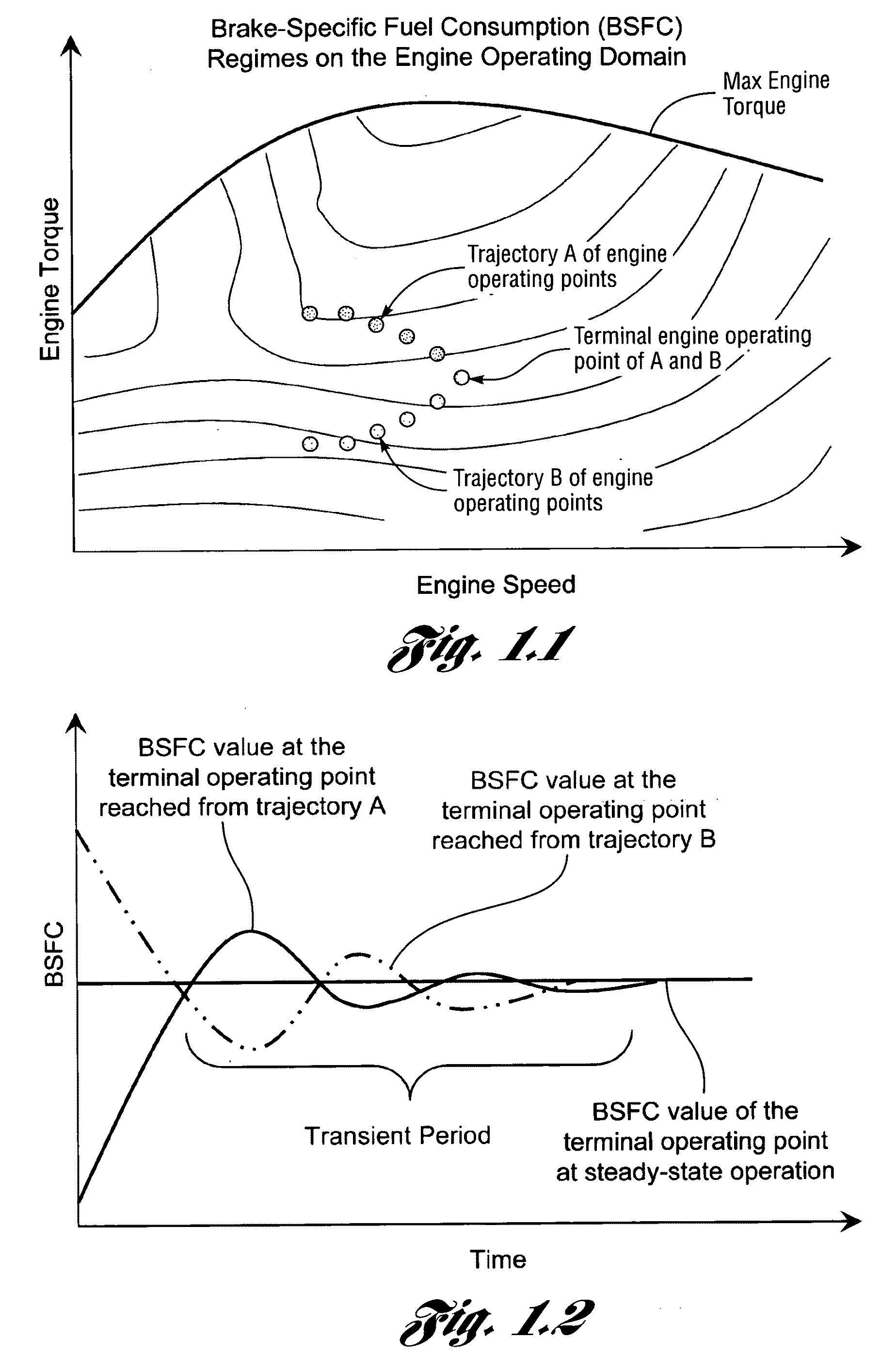Method, control apparatus and powertrain system controller for real-time, self-learning control based on individual operating style
a technology of powertrain system controller and control apparatus, applied in the direction of analogue processes for specific applications, instruments, navigation instruments, etc., can solve the problems of unsustainable fossil fuel resources, calibration methods, and rarely ensuring optimal engine operation
- Summary
- Abstract
- Description
- Claims
- Application Information
AI Technical Summary
Benefits of technology
Problems solved by technology
Method used
Image
Examples
Embodiment Construction
)
[0128]
TABLE OF CONTENTSCHAPTER 1 1.1 Motivation18 1.2 Advancements in Engine Electronic Control Units19 1.3 State-of-the-Art Engine Calibration Methods20 1.3.1 Design of Experiments21 1.3.2 Dynamic Model-Based Calibration Systems21 1.3.3 Calibration using Artificial Neural Networks22 1.3.4 Simulation-Based Calibration Systems23 1.4 Objective of at Least One Embodiment of the Invention23 1.5 Outline24CHAPTER 2SYSTEM IDENTIFICATION AND STOCHASTIC CONTROL25 2.1 Modeling Engine Operation as a Stochastic Process26 2.2 Sequential Decision-Making Problems Under Uncertainty27 2.2.1 Deterministic System Model28 2.2.2 Stochastic System Model30 2.3 Markov Decision Process33 2.3.1 The Cost of a Markov Control Policy34 2.4 Dynamic Programming Algorithm36 2.4.1 Optimal Control Policy37 2.5 Engine Identification and Stochastic Control: Problem37 DefinitionCHAPTER 3REAL-TIME, SELF-LEARNING SYSTEM IDENTIFICATION39 3.1 Reinforcement Learning Algorithms46 3.2 Identification and Stochastic Ada...
PUM
 Login to View More
Login to View More Abstract
Description
Claims
Application Information
 Login to View More
Login to View More - R&D
- Intellectual Property
- Life Sciences
- Materials
- Tech Scout
- Unparalleled Data Quality
- Higher Quality Content
- 60% Fewer Hallucinations
Browse by: Latest US Patents, China's latest patents, Technical Efficacy Thesaurus, Application Domain, Technology Topic, Popular Technical Reports.
© 2025 PatSnap. All rights reserved.Legal|Privacy policy|Modern Slavery Act Transparency Statement|Sitemap|About US| Contact US: help@patsnap.com



